Oppo Parts
Series Reno
Series A
Find X
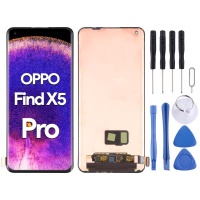
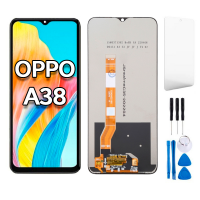
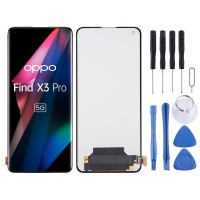
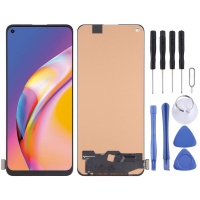

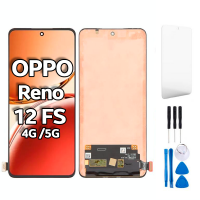
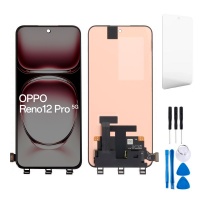
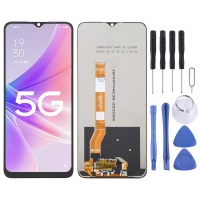

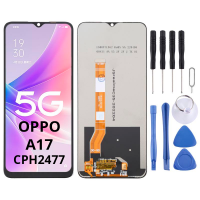
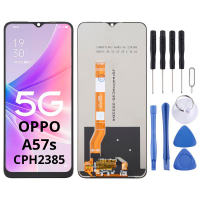









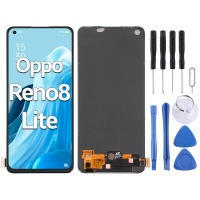

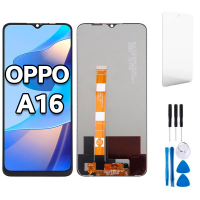
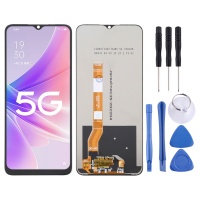
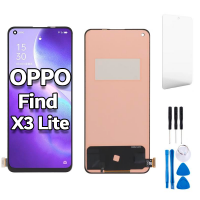


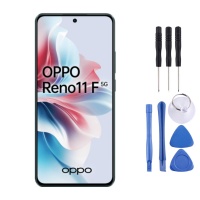

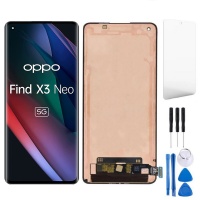
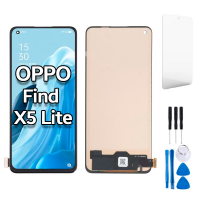

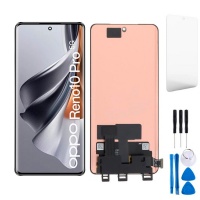
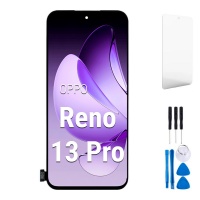
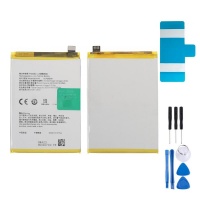
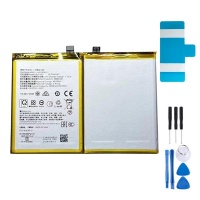
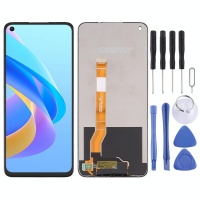
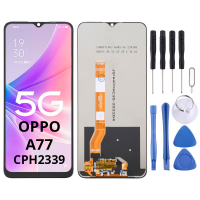
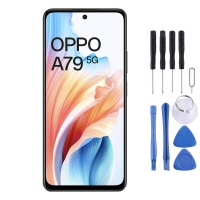
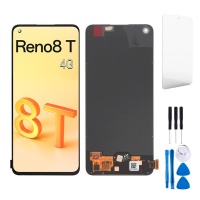
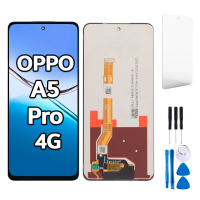
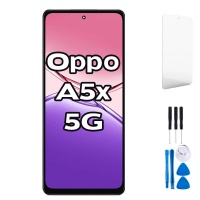
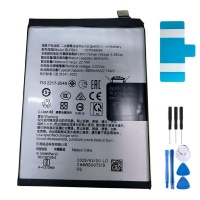
Receive it on tuesday 30 de december
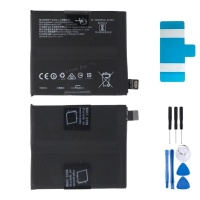

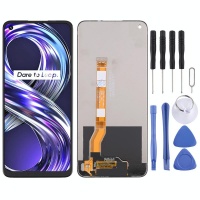

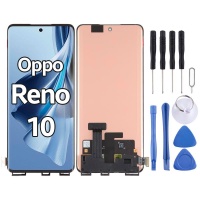
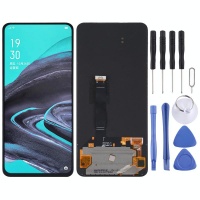

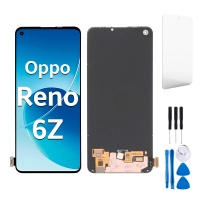

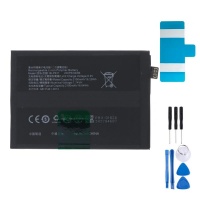
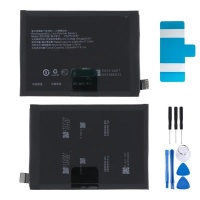

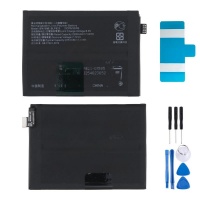
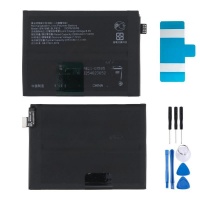
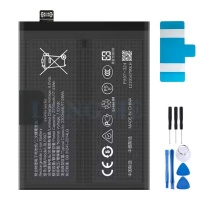
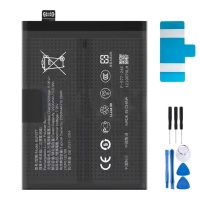
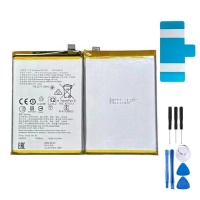
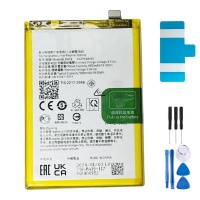

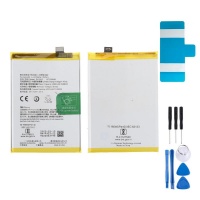
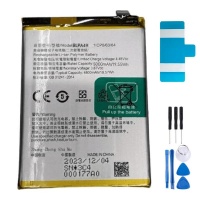

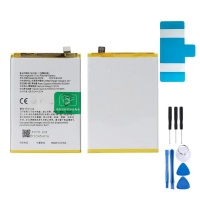
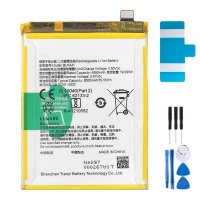
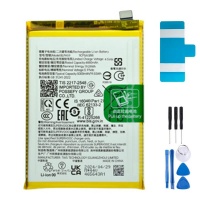
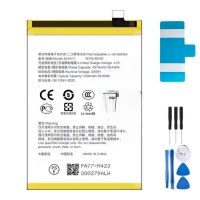
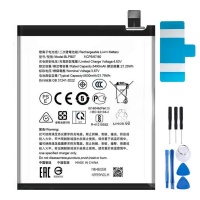


- Your Oppo Mobile Needs Some TLC: Find the Best Spares at iLevante.com
- An Oppo Universe: Getting to Know its Series and Most Popular Mobiles
- The 5 Musketeers of Repair: Most Relevant Oppo Models at iLevante.com
- Oh Dear, My Oppo! The Most Common Hardware Problems
- The Heart of the Repair: Types of Spare Parts for Your Oppo
- The Window to the World: All About Replacement Screens
- The Energy That Moves You: Replacement Batteries
- Beyond Screens and Batteries: Other Common Spares
- When the Problem Isn't What It Seems: Common Software Faults in Oppo (ColorOS)
- Let's Get to Work! (Very) Basic Guide for Common Repairs 👷♀️👷♂️
- Your Survival Kit: Essential Tools
- Safety First! Key Precautions
- General Steps for Changing the Screen (Indicative)
- General Steps for Changing the Battery (Indicative)
- Conclusion: Your Oppo Reborn Thanks to iLevante.com! ✨
Your Oppo Mobile Needs Some TLC: Find the Best Spares at iLevante.com
Hello! If you're here, it's likely your faithful Oppo companion needs a small (or large) repair. Don't worry! At iLevante.com, we not only have the spare parts you're looking for, but we also want to give you all the information so you understand what's wrong with your mobile and how you can bring it back to life. Oppo, the brand that has been gaining ground by leaps and bounds, has become a very popular option in the UK and Europe thanks to its balance between quality and price. Since its beginnings in 2004, Oppo has focused on innovation, especially in photography and fast charging (hello, VOOC!), and has strongly positioned itself in the global market, becoming the fourth or fifth largest manufacturer worldwide by sales.
But, like all electronic devices, Oppo mobiles are not indestructible. Silly drops, batteries that start to weaken over time, charging ports that resist... these are occupational hazards. The good news is that many of these problems have a solution, and often, you can do it yourself with the right parts!
In this guide, we're going to break down everything you need to know about spare parts for Oppo mobiles: from the different series and most popular models to the most common problems and how to tackle them. Let's get stuck in! 🛠️
An Oppo Universe: Getting to Know its Series and Most Popular Mobiles
Oppo isn't just a brand, it's a whole family of devices! To better understand which spare part you need, it's helpful to know the different series it offers:
- 📱A Series: This is Oppo's entry-level and mid-range. Mobiles designed for everyday life, with good battery life and reasonable prices. They are super popular and, therefore, very common in the repair shop! Here we find models like the A16, A54s, A76, A96, and the more recent A38, A58, A78 or A98. They usually stand out for large batteries and practical designs.
- ✨Reno Series: Steps up a level in design and photography. The Renos are usually very stylish mobiles, with more powerful cameras (often emphasising portraits and video) and premium features, but without reaching the price of the top-of-the-range models. Models like the Reno 6, Reno 7, Reno 8, Reno 10 and the new Reno 11, 12 and 13 are benchmarks here. They seek a balance between performance and aesthetics.
- 🚀Find X Series: The jewel in the crown! Here Oppo deploys all its technology: the best screens, the most powerful processors, jaw-dropping cameras (often in collaboration with Hasselblad) and innovative designs. The Find X3, Find X5 and the future Find X8 are the ultimate expression of Oppo. They are more expensive, but offer the latest and greatest.
- 📖Find N Series: The territory of foldables. Oppo has made a strong entry here with models like the Find N, Find N2 Flip and the most recent Find N3. They combine the innovation of foldable screens with high-end features. Their repairs are more specific and delicate.
- 📸F Series: Mainly aimed at Asian markets, although some models have reached Europe rebranded (often as A Series or Reno Lite). They usually focus heavily on the selfie camera and design. Models like the F19 are an example.
- 🌍Nord Series (Indirectly mentioned via OnePlus): Although technically under the sister brand OnePlus (now more integrated with Oppo), the Nord series shares a philosophy with Oppo's mid-range (like the A Series or more affordable Reno), offering good performance at competitive prices. Models like Nord, Nord CE, Nord N are very popular and share many technologies and, sometimes, even spare parts!
The 5 Musketeers of Repair: Most Relevant Oppo Models at iLevante.com
From the huge list of Oppo mobiles, we have selected 5 that, due to their popularity, time on the market, or features, are frequent candidates for needing a spare part. Here we present them, from most to least relevant for our audience!
- Oppo A78 (4G/5G): A mid-range bestseller. Launched in 2023, it combines solid features with an attractive price. Its AMOLED (on the 4G version) or LCD (on 5G) screen and its 5000mAh battery (probably BLP923, though unconfirmed) make it a frequent candidate for screen breakages or battery wear after a couple of years of use.
- Oppo Reno 8 (5G): A pillar of the Reno series launched in 2022. With its 90Hz AMOLED screen and 80W fast charging, it was very popular. Its 4500mAh battery (possibly BLP907) and its glass panel make it susceptible to typical screen and battery problems over time.
- Oppo Find X5 Pro (5G): The 2022 flagship. Although more expensive and perhaps less sold than the A or Reno series, its users usually want to keep it performing at the highest level. Its spectacular LTPO2 AMOLED screen and its 5000mAh battery (BLP907 indirectly confirmed by similarity to Reno 8 Pro+) are key components that may need replacement after knocks or intensive use.
- Oppo A96 (4G): Another workhorse of the 2022 mid-range. With a 90Hz IPS LCD screen and 5000mAh battery (probably BLP923), it's a robust mobile but not immune to drops or the inevitable battery wear. Its popularity ensures high demand for spare parts.
- Oppo Find N2 Flip: Oppo's clamshell foldable from late 2022. Foldables have unique repair needs, especially for the flexible internal screen (Foldable LTPO AMOLED) and the hinge. Although less common than the previous ones, their repairs are more specialised and the spare parts crucial. Its battery is 4300mAh (possibly BLP971).
Oh Dear, My Oppo! The Most Common Hardware Problems
Let's be honest, mobiles suffer. Whether due to carelessness or simply the passage of time, some components are more prone to failure. These are the most common issues we see in Oppo mobiles that might bring you looking for spare parts:
- 💥 Broken or Damaged Screen: The classic number one. A drop, an unfortunate knock, and crack! Broken glass. Sometimes it's just the outer glass and the touch still works (least serious), other times the touch stops responding or responds poorly, and in the worst case, the screen stays black, shows strange lines, spots or flickers (indicating damage to the internal LCD/OLED panel). The dreaded "green line" might also appear, a fault sometimes associated with AMOLED panels (especially Samsung) that can arise after updates or due to heat.
- 🔋 Degraded or Swollen Battery: Over time and charge cycles, all lithium batteries lose capacity. You'll notice it lasts less, drains very quickly, turns off suddenly even when showing percentage, or takes a long time to charge. In more serious cases, the battery can swell, deforming the mobile's casing. Watch out! A swollen battery is dangerous and must be replaced as soon as possible.
- 🔌 Faulty Charging Port: Does your Oppo not charge, charge very slowly, or does the cable "wobble" in the port?. The most common cause is accumulated dirt (dust, pocket lint). Cleaning it carefully (with something non-metallic like a toothpick!) often solves it. If not, it could be physical damage to the internal pins from forcing the cable or due to wear. Sometimes, the fault also prevents connection to the PC.
- 📷 Camera Problems: Blurry photos, difficulty focusing (especially on close objects), or the camera app closing unexpectedly. It could be a software problem (restarting or clearing the app cache might help), but it's often a hardware fault in the camera module, especially in the focusing mechanism.
- 🔊 Speaker or Microphone Failures: You can't hear calls, multimedia sound is low or distorted, or people can't hear you well when you speak. It could be dirt obstructing the grilles, or a failure of the component itself.
- 🌡️ Overheating: If your Oppo gets very hot, especially when charging or using demanding apps, it could signal a problem. Sometimes it's software (runaway background apps), but excessive and constant heat can indicate a battery or motherboard fault and damage other components in the long run.
- 💧 Liquid Damage: Although some Oppos have water resistance (IP68, IP69, etc.), this is not infallible and decreases over time or after impacts. Moisture can cause corrosion and erratic failures in any component.
- 🖱️ Stuck or Non-Functioning Physical Buttons: The power button or volume buttons don't respond well. It could be dirt or a failure of the internal flex cable mechanism for the button.
The Heart of the Repair: Types of Spare Parts for Your Oppo
When it's time to repair, knowing which part you need is fundamental. Here we detail the most sought-after spare parts and their variants:
The Window to the World: All About Replacement Screens
The screen is probably the most exposed and delicate component. If you need to change it, you'll find several quality and technology options:
- Panel Technologies:
- TFT LCD (Thin-Film Transistor Liquid Crystal Display): The most basic and economical technology. Needs a backlight to illuminate the pixels. They usually have more limited viewing angles and contrast than other technologies, and blacks are not as deep. Common in the entry-level range (some Oppo A).
- IPS LCD (In-Plane Switching): An improvement over TFT. Offers better viewing angles and more accurate colour reproduction, although it still needs a backlight. Some Oppo A and Nord use them.
- OLED (Organic Light-Emitting Diode): Each pixel emits its own light. This allows for "pure" blacks (pixels turned off), infinite contrast, and very vibrant colours. They are thinner and consume less energy (especially with dark backgrounds). Their main disadvantage is the risk of burn-in (permanent ghost images if the same thing is displayed for a long time) and a higher manufacturing cost.
- AMOLED (Active-Matrix OLED): The most common type of OLED in mobiles. Uses an active matrix of transistors (TFT) to control each pixel individually, allowing for higher refresh rates and better response. It's the technology used in most mid-range and high-end Oppos (Reno, Find X, some A).
- Super AMOLED: Samsung's marketing term. It's an AMOLED screen where the touch layer is integrated into the panel itself, making it thinner and improving visibility in sunlight. Oppo may use Samsung Super AMOLED panels or equivalents from other manufacturers like BOE.
- Fluid AMOLED / Super Fluid AMOLED: Marketing terms from OnePlus/Oppo for AMOLED screens that usually stand out for their high refresh rate (90Hz, 120Hz or more), providing a smoother and more fluid visual experience.
- LTPO AMOLED (Low-Temperature Polycrystalline Oxide): A more advanced technology allowing the refresh rate to vary dynamically (e.g., from 1Hz to 120Hz) to save battery. Typical of high-end models like the Find X Pro.
- Replacement Types (Qualities):
- Original: The same screen your mobile had from the factory. Maximum quality, compatibility, and performance guaranteed, but also the most expensive option. Sometimes hard to get outside official technical services.
- OEM (Original Equipment Manufacturer): Manufactured by the same companies that produce the originals for Oppo (or to identical specifications), but without the brand logo. Offer quality very close to the original at a more competitive price. Beware! The term "OEM" is sometimes used misleadingly to sell copies. Look for reliable suppliers like iLevante.com.
- Incell: An LCD technology where the touch layer is integrated into the LCD itself, making it thinner than traditional TFT/IPS. Used as an economical alternative to OLEDs in repairs. Image quality (brightness, colour, contrast) is lower than OLED but better than basic TFT, and the price is attractive.
- TFT (Compatible): Generic LCD screens of basic quality, the cheapest on the market. Performance in brightness, colours, and viewing angles will be noticeably lower than an original AMOLED or OLED screen. An option if the budget is very tight and you only seek basic functionality.
- OLED / AMOLED (Compatible/Aftermarket): Screens manufactured by third parties using OLED/AMOLED technology. Can offer good quality (sometimes called "Hard OLED" or "Soft OLED"), but there may be variations in brightness, colour calibration, or durability compared to originals/OEM. Usually more expensive than Incell/TFT but cheaper than Original/OEM.
Which to choose? Depends on your budget and standards. If you want the best, look for Original or trusted OEM. If you're looking for a quality-price balance for a mobile originally with an OLED screen, a compatible OLED or BF8 (if applicable) can be good options. If your mobile used LCD or you're looking for the cheapest option, Incell or TFT are the alternatives, with Incell generally being superior to basic TFT. At iLevante.com, we offer different qualities so you can choose the one that best suits you.
The Energy That Moves You: Replacement Batteries
The battery is the engine of your Oppo. When it starts to fail, the user experience suffers greatly. Changing it is one of the most effective repairs to rejuvenate your mobile. Here's what you need to know:
- When to Change It? If you notice it lasts much less than before, turns off suddenly, takes ages to charge, or gets excessively hot when charging. Also if you see it's physically swollen (this is urgent!). Apps like AccuBattery or the phone's own diagnostic tools can give you an idea of its "health" (remaining capacity compared to the original).
- Capacity (mAh): Look for a battery with the same (or very similar) capacity as the original for your model. Don't trust batteries promising exaggeratedly high capacities; they are usually fake. You can find the original capacity in your model's specifications (check our popular model descriptions above or search on GSMArena).
- Battery Models (BLP): Oppo (and OnePlus) use model codes for their batteries, starting with "BLP" followed by numbers (e.g., BLP685, BLP817). Knowing the BLP for your mobile ensures you buy the correct battery. Some examples:
- Oppo A15/A15s/A35: BLP817
- Oppo A52/A72/A92: BLP781
- Oppo A53/A32: BLP805
- Oppo A54s/A16/A16s: BLP805
- Oppo A76/A96/Nord CE 2 Lite 5G: BLP927 (A76/A96 use same battery as CE 2 Lite)
- Oppo Reno 3: BLP755
- Oppo Reno 7 Pro / OnePlus Nord 2T: BLP861
- Oppo Reno 8 / OnePlus Nord 2T: BLP907 (similar to BLP861)
- Oppo Reno 10 Pro: BLP991 (Inferred)
- Oppo Find X3 Pro: BLP831
- Oppo Find X5 Pro: BLP907 (Inferred, same as Reno 8 Pro)
- Oppo Find N2 Flip: BLP971 (Inferred)
- OnePlus 6T/7: BLP685
- OnePlus 7 Pro: BLP699
- OnePlus 7T: BLP743
- OnePlus 7T Pro: BLP745
- OnePlus 8: BLP761
- OnePlus 8 Pro: BLP759
- OnePlus 8T: BLP801
- OnePlus 9: BLP829
- OnePlus 9 Pro: BLP827
- OnePlus 10 Pro: BLP899
- OnePlus Nord N100: BLP813
- OnePlus Nord N10 5G: BLP815
- Unbranded OEM Batteries: The best-kept secret! Often, the factories that produce the original batteries for Oppo also sell them without the brand logo. These OEM (Original Equipment Manufacturer) batteries usually have the same quality and performance as the originals, but at a lower price. They are an excellent value-for-money option, provided you buy them from a reliable supplier who verifies their origin, as we do at iLevante.com. Don't get ripped off!.
- Compatible Batteries (Aftermarket): Manufactured by third parties. Their quality can vary greatly. Some may be good, but others can degrade quickly or fail to meet safety standards. If you opt for a compatible one, look for recognised brands or trust the selection of your spare parts shop.
- Battery Health Engine (BHE): Some newer Oppo (and OnePlus) models incorporate this technology. These are algorithms and chemical formulas designed to extend the battery's lifespan, maintaining good capacity over more charge cycles (Oppo talks about 1600 cycles maintaining 80%). This doesn't prevent wear, but it can delay it.
Beyond Screens and Batteries: Other Common Spares
Although screens and batteries are the stars, other parts might also need changing:
- 🔄 Charging Port Flex: The part containing the USB-C port and often the main microphone. If cleaning doesn't solve charging or PC connection problems, changing this flex cable is the solution.
- 📸 Camera Modules (Rear and Front): If the camera fails due to hardware, the complete module can be replaced.
- 🔙 Back Cover: If it breaks or gets scratched, changing it renews the mobile's look. They often come with the camera glass included or require separate adhesive.
- 🔊 Buzzer/Earpiece Speaker: If the sound fails, these components can be replaced.
- 🔗 Internal Flex Cables: Connect different parts of the motherboard (fingerprint reader, side buttons, etc.). Can be damaged during disassembly or through wear.
- 💾 SIM/SD Tray: A small but essential part that sometimes gets lost or broken.
- 🩹 Adhesives: Crucial for resealing the phone after a repair, maintaining dust/splash resistance (if it had it) and ensuring everything stays in place.
When the Problem Isn't What It Seems: Common Software Faults in Oppo (ColorOS)
Attention, technicians and DIYers! Sometimes, strange mobile behaviour that looks like a hardware fault (battery dies!, screen unresponsive!, restarts itself!) originates from the software, Oppo's ColorOS operating system. Knowing these can save you from changing a part unnecessarily:
- 🔄 Bootloop (Restart Loop): The mobile gets stuck on the Oppo logo or restarts constantly without fully booting. Often happens after a failed update or a serious system error. The solution involves entering Recovery Mode (Power Off -> Hold Power + Volume Down) and from there trying to wipe the cache (Wipe Cache Partition) or, as a last resort, doing a factory reset (Wipe Data/Factory Reset), beware, this erases all your data!. In severe cases, it might require reflashing the firmware.
- 📉 Excessive Battery Drain Post-Update: It's quite common for battery life to decrease after a major update (Android/ColorOS version change). This is often temporary while the system "settles down" and optimises background apps. A sometimes recommended trick is, after the update, charge the mobile to 100% and leave it plugged in for an extra couple of hours to help calibration. If it persists, check which apps consume the most in battery settings or consider a factory reset.
- 🐛 General ColorOS Bugs: Like all software, ColorOS can have its faults. These could be things like an app closing itself, notifications not arriving, Wi-Fi or Bluetooth connection problems, fingerprint sensor or facial recognition failures after updating, or slow performance. Often solved by restarting, clearing the affected app's cache, ensuring you have the latest system and app versions, or in stubborn cases, with a reset.
- 👻 Ghost Touches or Lack of Touch Response: Sometimes, the screen might register touches you didn't make or stop responding. If there's no visible physical damage, it could be a software bug. A forced restart (Power + Volume Up for about 8-10 seconds) might help.
- 🚫 Software-Induced Charging Problems: On rare occasions, a bug can cause the mobile not to recognise the charger or activate fast charging (VOOC) until it's restarted.
How to Distinguish? Not always easy. If the problem appears RIGHT after an update, suspect software. If it responds to restarts or resets, it's more likely software. If it persists after a factory reset or if there's obvious physical damage (broken screen, swollen battery), it points to hardware. Built-in diagnostic tools (sometimes accessible by dialling codes like `*#808#` or `*#800#`) or apps like "Phone Manager" might give clues, but they aren't foolproof.
Let's Get to Work! (Very) Basic Guide for Common Repairs 👷♀️👷♂️
Hold On! Important Warning: Repairing a modern mobile is delicate. If you lack experience, proper tools, or feel hesitant, it's best to go to a professional (like those found at services like iFixit or recommended workshops). Mishandling can cause more irreparable damage. Furthermore, opening the mobile yourself may void the manufacturer's warranty. This guide is only indicative; the exact steps vary GREATLY depending on the Oppo model. Look for specific tutorials (YouTube videos, iFixit guides) for your particular device before starting.
Your Survival Kit: Essential Tools
To get your hands on your Oppo, you'll need a basic arsenal:
- 🔧 Precision Screwdrivers: Varied kit with Phillips (#000, #00), Torx (T3-T6), and sometimes Pentalobe bits (rarer in Oppo). Magnetised are a plus!.
- 🎸 Prying Tools: Thin plastic picks, spudgers (plastic/nylon levers). For separating casings and connectors without scratching.
- 💨 Suction Cup: For lifting glued screens.
- 🤏 Tweezers: Fine, straight, and curved. Anti-static/anti-magnetic if possible.
- 🔥 Heat Gun / Hairdryer / iOpener: To soften adhesives (very carefully).
- ⚡ Anti-Static Wrist Strap and Mat (ESD Mat): ESSENTIAL! Protect against static electricity.
- 🧼 Others: Nitrile gloves, safety glasses, isopropyl alcohol, microfibre cloths, screw organiser, new adhesive (B7000/T7000 or strips).
Safety First! Key Precautions
- DISCONNECT EVERYTHING! Turn off the mobile. Disconnect the battery AS SOON AS you can access it, BEFORE touching anything else.
- BEWARE OF STATIC (ESD)! Use an anti-static wrist strap connected to ground. Touch metal periodically.
- LITHIUM BATTERIES = DELICATE: NEVER puncture, bend, or crush. Use plastic to pry. If swollen, step away and seek a professional!.
- CONTROLLED HEAT: Don't overheat components.
- ORGANISATION: Every screw in its place! Use a map or magnetic mat.
- SAFE ENVIRONMENT: Good light, cleanliness, ventilation.
General Steps for Changing the Screen (Indicative)
- Turn off the mobile and remove the SIM tray.
- Apply gentle, even heat to the edges of the back cover.
- Use a suction cup and a thin pick to create a gap and carefully cut the perimeter adhesive.
- Lift the cover cautiously, watching for potential flex cables (fingerprint reader, etc.). Disconnect them if necessary.
- Remove metal shields over the board connectors (keep the screws!).
- DISCONNECT THE BATTERY FIRST with a plastic spudger.
- Disconnect the old screen's flex cable.
- If the new screen doesn't come with a frame, apply gentle heat to the old one and lift it with suction cup/picks. Clean the frame well.
- Transfer necessary components (speaker, sensors...) to the new screen if not included.
- Connect the new screen's flex cable.
- Temporarily connect the battery and TEST THE NEW SCREEN (touch, image) before sealing.
- Disconnect the battery again.
- Apply new adhesive to the frame.
- Place the new screen.
- Reconnect everything (including battery) and replace shields/screws.
- Apply adhesive for the back cover.
- Close the cover and press (use clamps/rubber bands while it dries).
General Steps for Changing the Battery (Indicative)
- Follow steps 1-6 of the screen change to open the mobile and disconnect the battery.
- Locate the battery and the adhesive strips holding it.
- Pull the adhesive tabs (if present) SLOWLY and STEADILY. If they break or aren't there, apply VERY gentle heat from the back or use isopropyl alcohol carefully to soften the glue.
- Pry GENTLY with a PLASTIC tool to detach it. DON'T USE METAL OR BEND IT!.
- Remove the old battery.
- Place the new one (apply adhesive if it doesn't have it).
- Connect the new battery's flex cable.
- Reassemble the phone (reverse steps: connect flex cables, shields, back cover adhesive, close).
- Charge the new battery to 100% and leave it for an extra couple of hours the first time to calibrate.
Changing the battery is usually less complex than the screen, but beware of glued-in batteries! Difficulty varies greatly between models.
Conclusion: Your Oppo Reborn Thanks to iLevante.com! ✨
And that's all, folks! We've journeyed through the universe of Oppo spare parts, from getting to know its families and star models, to identifying those issues that give us headaches and how to solve them. Now you're almost an expert in distinguishing between AMOLED, Incell, or TFT screens, and you know that an OEM battery can be your best ally for quality-price balance.
Remember: using quality parts is fundamental for your repair to be durable and for your Oppo to perform like new again. At iLevante.com, we carefully select our spare parts to offer you the reliability you need.
Ready to give your device a new lease of life? 💪 Explore our complete section of Spare Parts for Oppo Mobiles at iLevante.com. We have the screen, battery, charging connector, or that small part you're missing, with clear information and the quality you seek for a successful repair! And if you have any doubts, don't hesitate to contact us! Our team is here to lend you a hand. 😉







